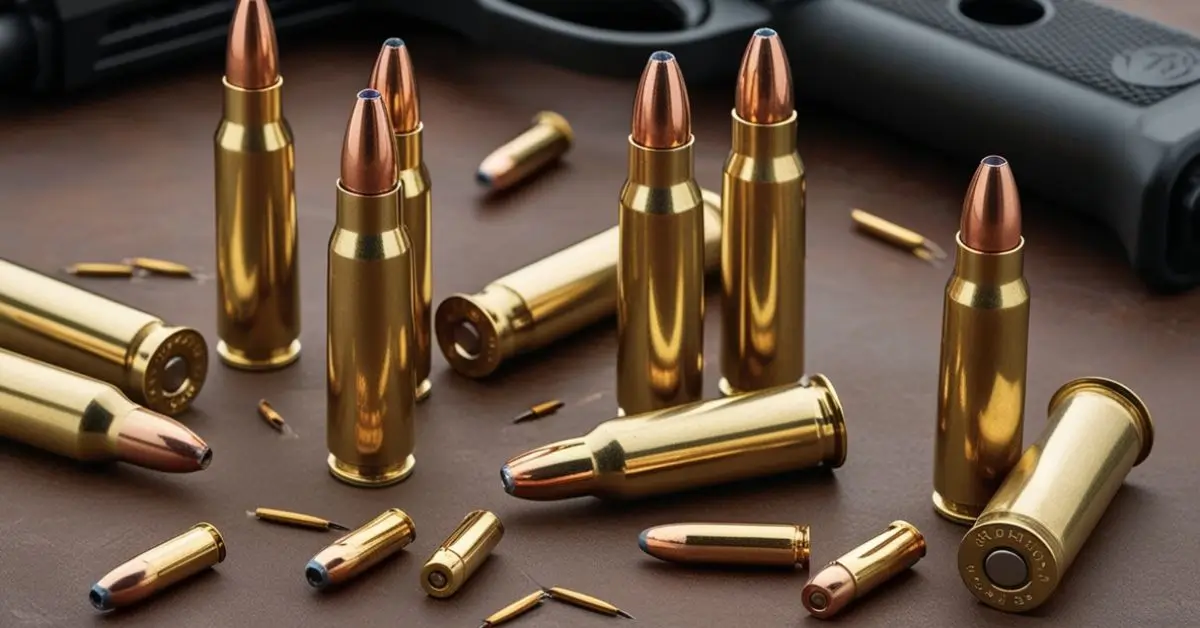Reloading ammunition for semi-automatic firearms is a precise process that empowers shooters to create customized, cost-effective rounds tailored to their specific needs. While it requires attention to detail and the right tools, the rewards include better performance, cost savings, and a deeper understanding of ballistics.
This guide breaks down the process, from understanding the components to executing each step safely and effectively. Whether you’re a beginner or an experienced shooter looking to refine your skills, this guide will help you navigate the nuances of reloading semi-auto rounds.
Why Reload Semi-Auto Rounds?
Reloading semi-auto ammunition offers several advantages, including:
- Cost Savings: Over time, reloading is more economical than purchasing factory ammunition, especially for frequent shooters.
- Customization: Tailor your loads to achieve specific performance characteristics, such as accuracy, reduced recoil, or optimized velocity.
- Self-Sufficiency: Gain independence from market fluctuations in ammunition availability.
- Improved Accuracy: Hand-loaded ammunition often delivers better consistency than factory rounds.
Understanding the Components of Ammunition
Before delving into the reloading process, it’s crucial to understand the four key components of a round:
- Case: The brass or steel shell that houses all other components.
- Primer: The ignition source that starts the powder burn.
- Powder: Provides the energy to propel the bullet downrange.
- Bullet: The projectile that exits the barrel and hits the target.
In semi-automatic firearms, cases are ejected and reused, making it essential to inspect and prepare them carefully.
Essential Tools for Reloading Semi-Auto Rounds
To begin reloading, you’ll need a collection of tools and equipment tailored to your specific needs and budget. Below are the most common items:
- Reloading Press: The centerpiece of your setup, used to combine and assemble the components. Single-stage presses are ideal for beginners, while progressive presses are faster for high-volume reloaders.
- Dies: Caliber-specific tools that resize cases, seat bullets, and apply crimps.
- Powder Scale: Ensures precise measurement of powder charges.
- Powder Dispenser: Speeds up the charging process and improves consistency.
- Calipers: Measure case dimensions, ensuring proper chambering and cycling.
- Case Tumbler: Cleans brass cases, removing dirt and residue.
- Reloading Manual: Provides vital data, including powder charges and bullet seating depths.
Step-by-Step Reloading Process
Reloading semi-auto rounds involves several stages, each requiring precision. Follow these steps to produce safe, reliable ammunition:
1. Case Inspection and Cleaning
- Inspect Cases: Look for cracks, dents, or deformities. Discard any cases showing significant damage.
- Clean Cases: Use a case tumbler or ultrasonic cleaner to remove residue and ensure proper functioning in your press.
2. Resizing and Depriming
- Insert the sizing die into your press. This tool restores the case to its original dimensions, allowing for proper feeding and extraction in semi-auto firearms.
- Deprime the case (remove the spent primer) during this step.
3. Priming
- Install a new primer into the case using a priming tool. Ensure the primer is seated flush or slightly below the case surface for reliable ignition.
4. Powder Charging
- Measure the correct amount of powder using a scale or dispenser. Consistency is key, as even slight variations can affect performance.
- Pour the powder into the case, ensuring no overcharges or undercharges.
5. Bullet Seating
- Place the bullet into the case mouth and use the seating die to press it to the correct depth. Refer to your reloading manual for exact specifications.
- Check the overall cartridge length with calipers to ensure proper chambering.
6. Crimping
- Apply a light crimp to secure the bullet in the case. This step is crucial for semi-auto rounds, as it prevents bullet movement during feeding and firing.
7. Final Inspection
- Check each cartridge for defects, proper dimensions, and consistent powder levels. A quick visual inspection can save time and prevent malfunctions.
Important Tips for Reloading Semi-Auto Rounds
Reloading for semi-automatics requires attention to detail due to their unique cycling mechanisms. Keep these tips in mind:
- Case Sizing Matters: Proper resizing ensures smooth feeding and ejection. Full-length resizing dies are recommended for semi-auto cartridges.
- Avoid Over-Crimping: Excessive crimping can deform the case or bullet, affecting accuracy and functionality.
- Use Reliable Data: Follow load data from reputable reloading manuals or manufacturers. Avoid guessing or experimenting without proper guidance.
- Test in Small Batches: Load a few rounds and test them before committing to a large batch. This ensures reliability and performance in your specific firearm.
Common Mistakes to Avoid
While reloading is a rewarding process, mistakes can happen. Here are common pitfalls and how to avoid them:
- Skipping Case Inspection: Failing to inspect cases for damage can lead to dangerous malfunctions.
- Inconsistent Powder Charges: Always double-check your scale and powder measure to avoid overloading or underloading.
- Improper Bullet Seating: Seating bullets too deeply or too shallowly can cause pressure issues or feeding problems.
- Neglecting Safety Precautions: Always wear safety glasses and keep your workspace clean and organized.
Comparison of Reloading Presses for Semi-Auto Rounds
Choosing the right press is essential for a smooth reloading experience. Here’s a comparison of popular models:
| Press Model | Type | Features | Price Range |
|---|---|---|---|
| Lee Precision Classic | Single-Stage | Durable, beginner-friendly | $100-$150 |
| RCBS Rock Chucker | Single-Stage | Precision-focused, heavy-duty construction | $200-$250 |
| Dillon Precision 550C | Progressive | High output, versatile for multiple calibers | $500-$600 |
| Hornady Lock-N-Load AP | Progressive | Quick caliber changes, high production rate | $450-$550 |
Safety Considerations for Reloading
Safety should always be your top priority when reloading. Here are critical practices to follow:
- Use a Dedicated Workspace: Keep your reloading area organized and free of distractions.
- Label Components Clearly: Avoid mixing powders, primers, or cases.
- Store Components Safely: Keep powder and primers in cool, dry conditions, away from open flames or sparks.
- Wear Protective Gear: Safety glasses and gloves can protect against accidental spills or misfires.
Benefits of Mastering Reloading
Reloading is more than a practical skill; it’s an opportunity to deepen your connection with the shooting sports. As you refine your techniques, you’ll enjoy benefits such as:
- Enhanced accuracy tailored to your firearm.
- A deeper understanding of ammunition and ballistics.
- A sense of accomplishment from crafting reliable, high-quality rounds.
Final Thoughts
Reloading semi-auto rounds is a meticulous but rewarding process that offers significant benefits for shooters. By following this guide and prioritizing safety, you can produce reliable, cost-effective ammunition tailored to your needs. Whether you’re looking to save money, improve accuracy, or simply enjoy a new aspect of your shooting hobby, reloading is a skill worth mastering.












